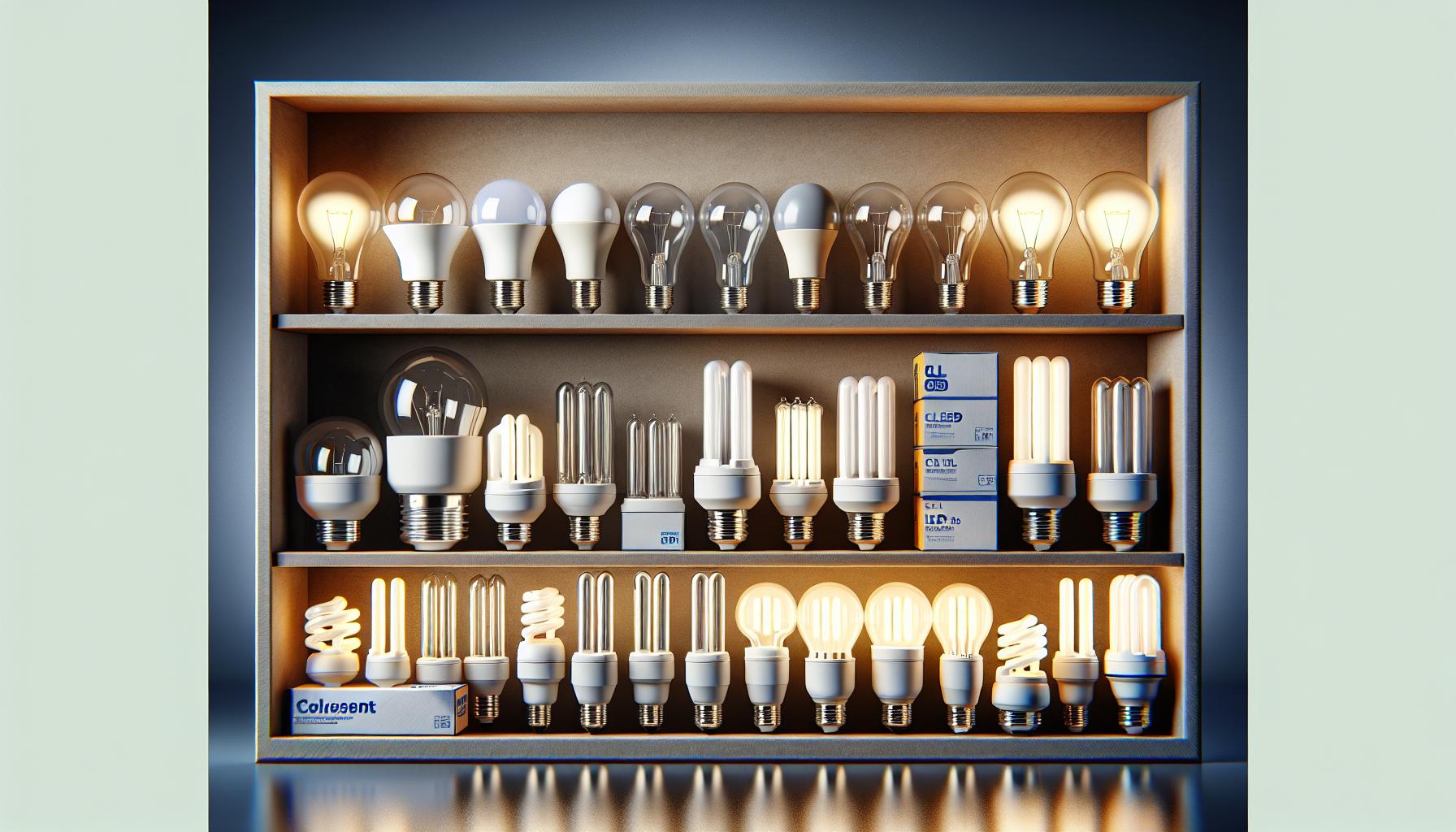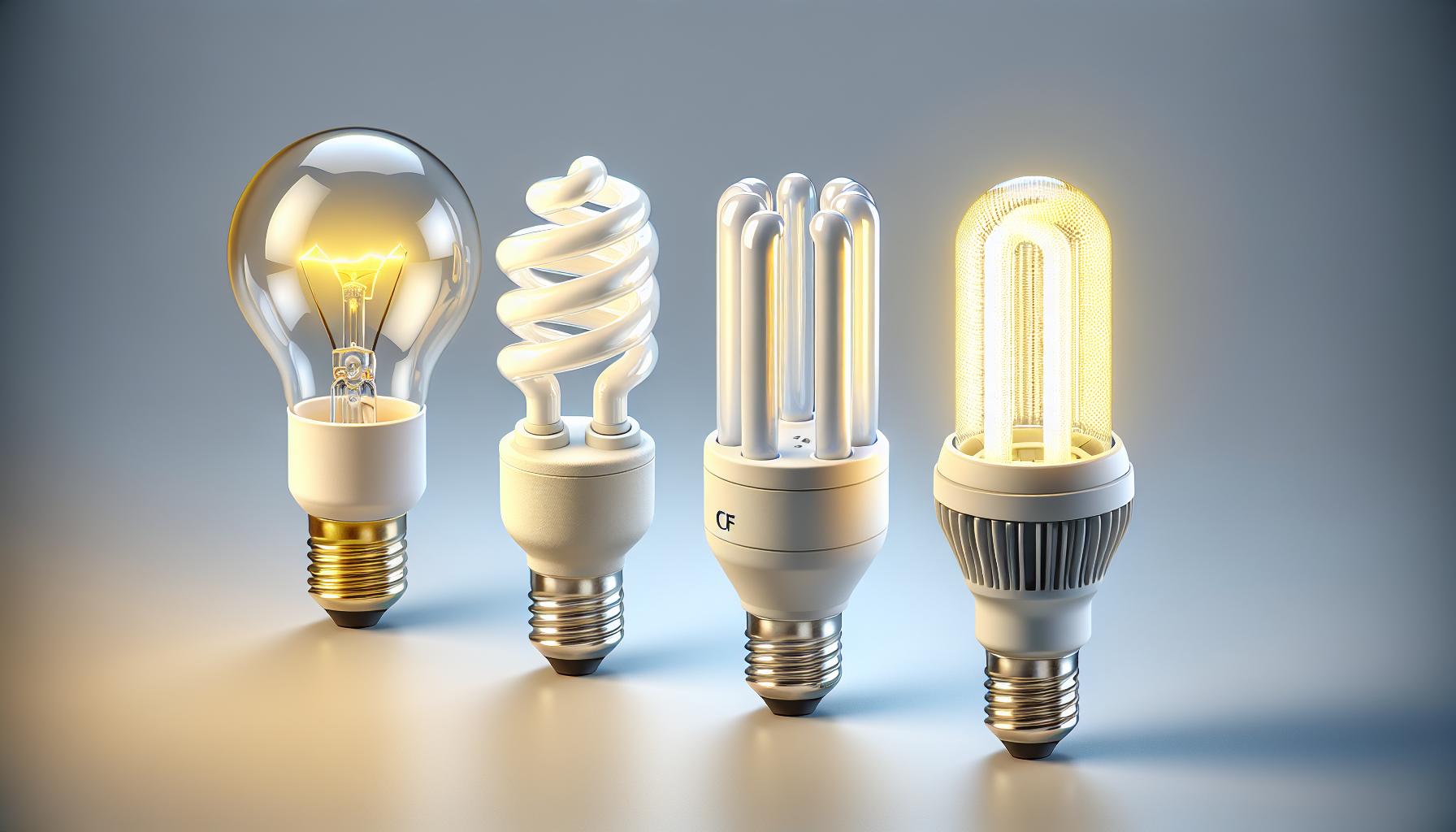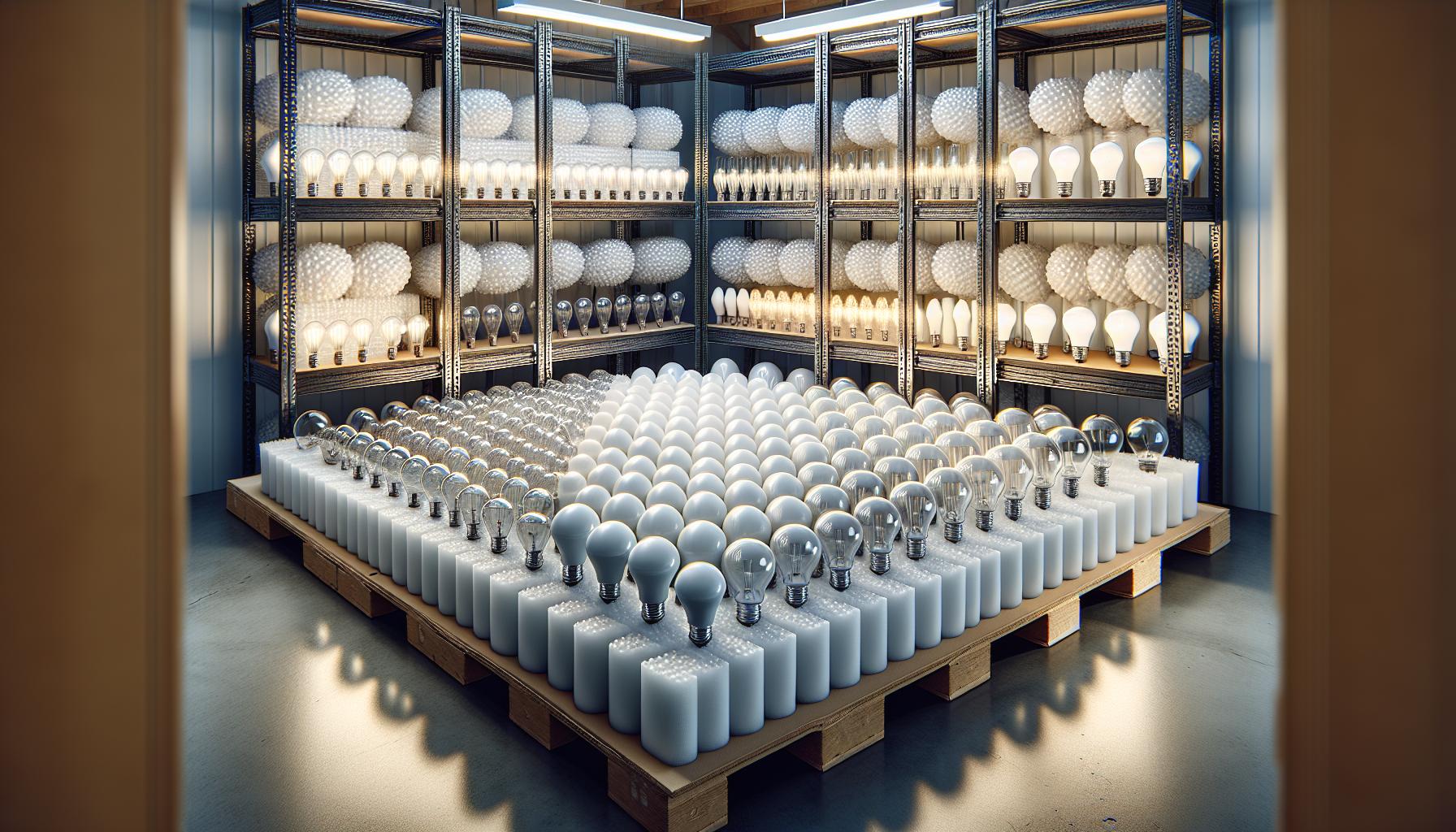Ever found yourself digging through a storage box and stumbling upon a stash of light bulbs? You might wonder if they’ve still got some life in them. It’s a common question: how long do light bulbs last when they’re not lighting up your life but tucked away in a closet or garage?
The good news is that light bulbs, unlike perishables in your pantry, don’t have a strict expiration date. But there’s a bit more to it than that. Stick with us as we shed some light on the shelf life of those bulbs and what factors can affect their longevity, even in storage.
Factors That Affect the Lifespan of Light Bulbs in Storage
When you’re storing light bulbs, whether it’s for a rainy day or because you snagged a great deal at the store, knowing what impacts their shelf life is smart. It’s not just about throwing them in a closet and forgetting about them. No, you’ve got to be a bit more strategic if you want those bulbs to light up your life when the time comes.
Temperature and Humidity
First up, let’s talk climate control. Light bulbs aren’t fans of extreme temperatures or wild swings in humidity.
- Ideal storage conditions include:
- A cool, dry place
- Steady temperature, ideally between 40°F and 60°F
- Low humidity levels
Exposure to high temperatures or moisture can cause the metal components to deteriorate or the glass to become fragile. And nobody wants a light bulb that fizzles out before its time.
Vibration and Shock
Handling is another crucial factor. Think of your light bulbs as tiny sleeping beauties—any abrupt wake-up call, like a shock or vibration, could spell trouble.
- Tips for proper handling:
- Store bulbs in their original packaging for cushioning
- Avoid areas subject to frequent movement or shaking
- Keep them away from heavy items that might fall or press against them
Pests and Chemical Exposure
Believe it or not, critters can be light bulb adversaries. Mice and other pests might gnaw on the packaging or even the bulbs. And chemicals? They’re sneaky villains that can corrode or damage bulbs without you even noticing.
- Protection measures include:
- Sealed containers to deter pests
- Storing bulbs away from harsh chemicals like cleaning supplies
By monitoring these factors, your stockpile of light bulbs is more likely to remain triumphant, ready to banish the darkness whenever you call upon them. Keep this knowledge in your back pocket, and your home DIY lighting projects will surely shine.
Understanding the Shelf Life of Light Bulbs
If you’re knee-deep into home DIY projects, you’re likely no stranger to the frustrating moment when a bulb blows far sooner than expected. This is why understanding the shelf life of light bulbs can save you from unexpected trips to the store and help you make the most of your stockpile.
Light bulbs do not last forever on the shelf, even unused. The shelf life can range from a few years to several, depending on the type. For example, incandescent bulbs can last about 1-2 years in storage, whereas LEDs, known for their longevity, can easily surpass 3-5 years if stored correctly.
Here’s the lowdown on a few factors you’ll want to keep in your back pocket:
- Type of Bulb:
- Manufacturing Quality: Higher-quality bulbs are likely to stay bright and functional longer, both in use and in storage. It’s worth investing in reputable brands.
- Packaging: Keep the bulbs in their original packaging. This protects them from moisture and physical damage.
Here’s a quick glance at expected storage times based on bulb types:
| Type | Expected Shelf Life |
|---|---|
| Incandescent | 1-2 years |
| Halogen | 2-3 years |
| CFL | 3-4 years |
| LED | 3-5+ years |
Remember, these are just benchmarks. Real-world conditions can shift these numbers. If you’re storing bulbs for your next DIY lighting project, make them last by stashing them in a cool, steady, and encore for emphasis, dry spot. And while it’s the last thing you want during a creative surge, handling them like they’re precious heirlooms – because in a sense, they are – will go a long way in protecting your luminous investments.
How Long Can You Store Light Bulbs Without Using Them?
« What Can I Cover a Light Bulb With? 10 Ingenious DIY Shades
Why Is My Light Bulb So Dim? Uncover the Unseen Reasons and Fixes »
Have you ever stashed away a few light bulbs for a rainy day, only to wonder how long they’ll sit tight before losing their shine? As a DIY enthusiast and lighting aficionado, you know the importance of having a well-lit space and the frustration when a bulb flickers out unexpectedly. So, here’s the lowdown on your light bulbs’ shelf life, so you’re never left in the dark.
First things first, incandescent bulbs can be quite the pantry hoarders, content to sit in storage for years. They don’t have any fancy electronics or gases that degrade over time, so as long as they’re not jostled around too much, they’ll likely work even if they’ve been sitting around since your last home renovation. Just keep ’em cozy, cool, and collected.
Now let’s chat about CFLs (Compact Fluorescent Lamps). These curly wonders are a bit more sensitive due to the small amount of gas inside. While they’re pretty good at playing the long game, you might find that anything over two years can be a gamble. The best play? Rotate your stock if you can, keeping the oldest bulbs accessible so they get used first.
As for LEDs (Light Emitting Diodes), these are the marathon runners of the bulb world. They boast incredible lifespans even after being stored. Really, an LED’s shelf life might just outlast your favorite home decor trend. It’s not uncommon for LEDs to last upwards of five years without flickering, even in storage. Plus, they’re durable, less sensitive to temperature changes, and their internals are solid-state, meaning they’re rugged by nature.
Here are some expected storage times for different bulb types:
| Bulb Type | Expected Storage Time |
|---|---|
| Incandescent | 2-3 years |
| CFL | 2 years |
| LED | 5+ years |
Remember, these are just guidelines. Actual shelf life could be affected by storage conditions. But hey, with bulbs that last this long in storage, you’ll have more time for those DIY projects and less time worrying about a surprise trip to the store. Just make sure to store your bulbs in a cool, dry place, handle them carefully, and keep the packaging intact to avoid any premature dimming.
Tips for Extending the Lifespan of Light Bulbs in Storage
As someone passionate about home DIY projects and the illuminating world of lighting, you’re well aware that every bulb counts. To ensure the light bulbs you’ve stored keep their glow for as long as possible, there are a few key storage tips that can make all the difference.
First and foremost, keep moisture at bay. Store your bulbs in a cool, dry place to prevent any moisture from shortening their life span. Basements and garages can often be damp, so consider an inside closet or cabinet as a better alternative.
Next, focus on gentle handling. Bulbs are fragile, and even the slightest knock can cause damage that isn’t immediately visible but can compromise the bulb’s longevity. Handle them with care and place them in a secure storage container. A little padding never hurts, especially for delicate CFLs and incandescent bulbs.
Avoid extreme temperatures; both high and low can be detrimental. Fluctuations in temperature can cause the components inside the bulbs to expand and contract, potentially leading to a break or malfunction. Aim for a consistent, moderate temperature range to maintain the integrity of your bulbs.
Here are a few more tips for optimal storage:
- Use the original packaging when possible for protection
- Keep bulbs in a well-ventilated area to prevent heat buildup
- Label your bulbs with the purchase date so you can use older stock first
Remember, LED bulbs are more durable but still benefit from these storage practices. By following these tips, you’ll be safeguarding your stellar collection of light bulbs, ensuring you always have the right light for your next DIY project or home update without any unexpected dim moments.
Conclusion
You’ve got all the tips you need to keep your light bulbs shining bright even before they make it into your lamps. Remember, the key to longevity is in how you store them. So tuck them away safely and they’ll be ready to light up your space whenever you need them. It’s all about giving those bulbs a little TLC while they’re off duty so they can perform at their best when it’s showtime. Happy storing!
Frequently Asked Questions
Where should I store my light bulbs to extend their lifespan?
Store your light bulbs in a cool, dry place to protect them from moisture and prevent premature aging.
Can rough handling affect the lifespan of my stored light bulbs?
Yes, gentle handling is crucial to avoid damaging the bulbs, which can negatively affect their longevity.
Is it bad to store light bulbs in areas with extreme temperatures?
Avoid extreme temperatures when storing light bulbs, as they can cause damage and reduce the bulbs’ lifespan.
Should I keep the original packaging for storing light bulbs?
Yes, using the original packaging for storage provides protection and helps maintain the integrity of the light bulbs.
Is it necessary to keep stored light bulbs in a well-ventilated area?
Keeping bulbs in a well-ventilated area is recommended to prevent any buildup of heat that could damage them over time.
Why is it helpful to label light bulbs with the purchase date?
Labeling bulbs with the purchase date helps you keep track of their age and use them in an order that optimizes their effectiveness.




